Have you ever wondered why Temu secures higher rankings and visibility scores in certain storefronts while AliExpress dominates others? The key lies in one word: localization.
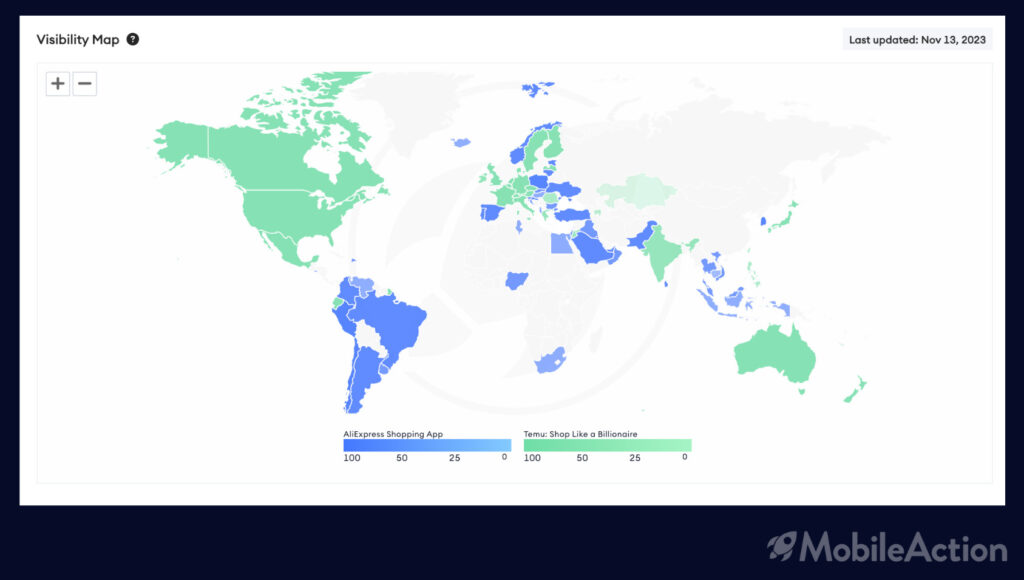
Growth and localization are inseparable in the ASO journey, allowing developers to broaden their horizons by not only making their apps available across multiple countries but also by enhancing their desirability and discoverability. The connection is undeniable; if you’re crafting a mobile user acquisition strategy that will include multiple countries, localization should be a non-negotiable item on your checklist.
But why? Even though English is the most widely spoken language in the world, and an app with all English metadata might have five-star ratings and glowing reviews, it still may not impress non-native English speakers. Consider stumbling upon a fantastic app in the store, only to find its content is not in your language. The barrier becomes evident—understanding the metadata becomes a challenge. Thus, the importance of mobile app localization and extending beyond mere translation to offer a full user experience in the language of your target audience is high.
Innovative translation modules make keyword optimization more efficient, providing users with immediate translations. However, translation alone isn’t always sufficient. It’s essential to adapt your text to align with the specific culture you aim for. Incorporating cultural trends and elements can significantly enhance user experience—people appreciate encountering facets of their culture, fostering a sense of familiarity with your app, such as cultural idioms, events or even visual elements.
In global app stores, aligning your app with local characteristics is not just beneficial—it’s imperative for a successful ASO strategy. Understanding the search behaviors of each target audience based on their language and culture is critical. While mobile app localization may seem complex, the effort and time invested in a perfect strategy yield rewards in boosted download numbers and improved category rankings.
In this blog post, we’ll discuss the essentials of app localization, unraveling its importance for a detailed ASO and app marketing strategy.
Why is Localizing App Store Presence Important?
Mobile app store presence localization is instrumental in increasing downloads across various storefronts. Google and Apple prioritize localized apps because they provide better user experiences. Both stores grant a significant advantage in rankings, especially in non-English speaking countries. Users are more likely to choose apps in their native language, even if they are proficient in English. Localization of app store presence not only involves translating metadata, it also requires a holistic makeover consisting of adjusting creatives, images, videos, and even measurement units to align with the target market’s culture. Ultimately, localization is the key to elevating conversion rates, fostering user engagement, and driving your business to global heights.Here’s a brief example illustrating how localization operates, which we’ll explore further in the next paragraph. Examining Temu’s updates in Sweden via the App Update Timeline, we notice that on August 13, Temu localized its app name, subtitle, description, and screenshots. Following this update, there was a noticeable rise in Temu’s visibility score in Sweden. At the start of August, it stood at 80.6 out of 100, but by November, it had risen to 86.32. This is just the starting point of the example; hold on tight, we’ll discover a lot more on localization.
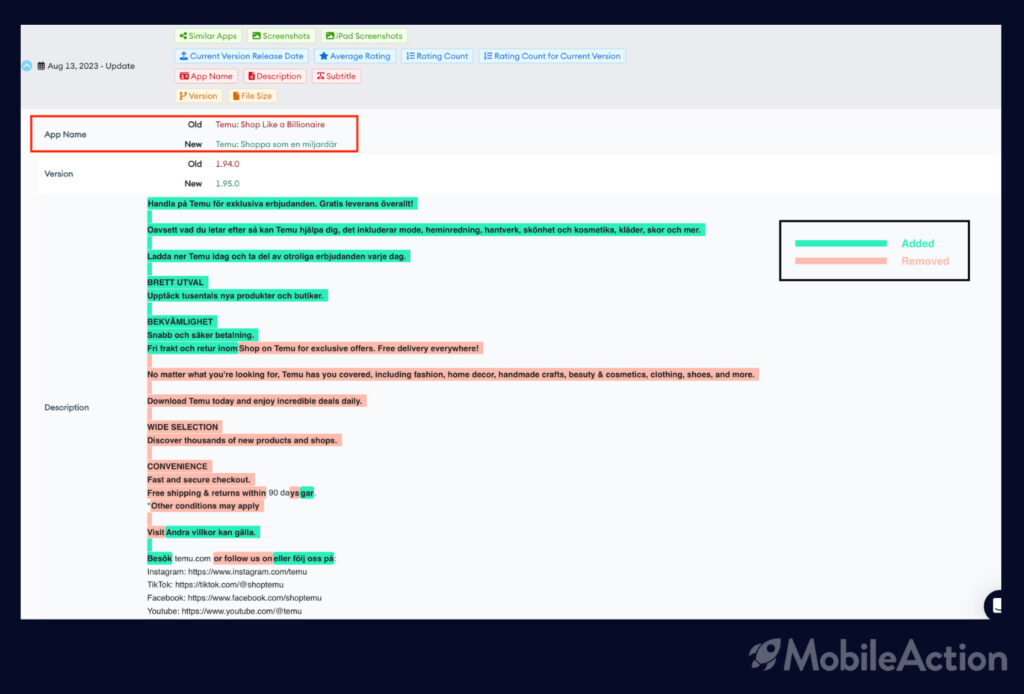
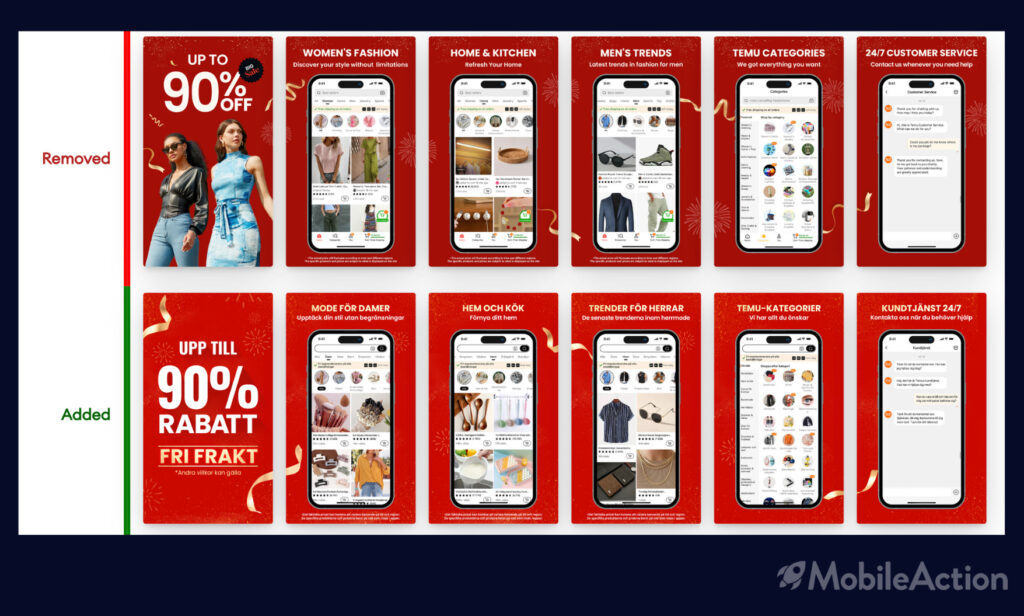
The Effects of Localization on Temu and AliExpress’ Regional Success
Let’s go over an example showcasing how the importance of localization manifests through Temu and AliExpress. Both are shopping apps with nearly identical audiences, providing similar value. Consequently, both apps closely monitor each other’s App Store Optimization activities.
The comparison map at the beginning shows different visibility scores for these apps across various regions. This may indicate active utilization of ASO for localization, facilitating their app growth in diverse locations.
A closer examination of each app’s localization tactics further confirms this trend. MobileAction’s Localization tool reveals that in Romania, Sweden, and Greece, Temu has localized its subtitles and descriptions, while AliExpress retained theirs in the original language. This distinction has yielded tangible results, with Temu achieving higher visibility and top category rankings than AliExpress in these regions.

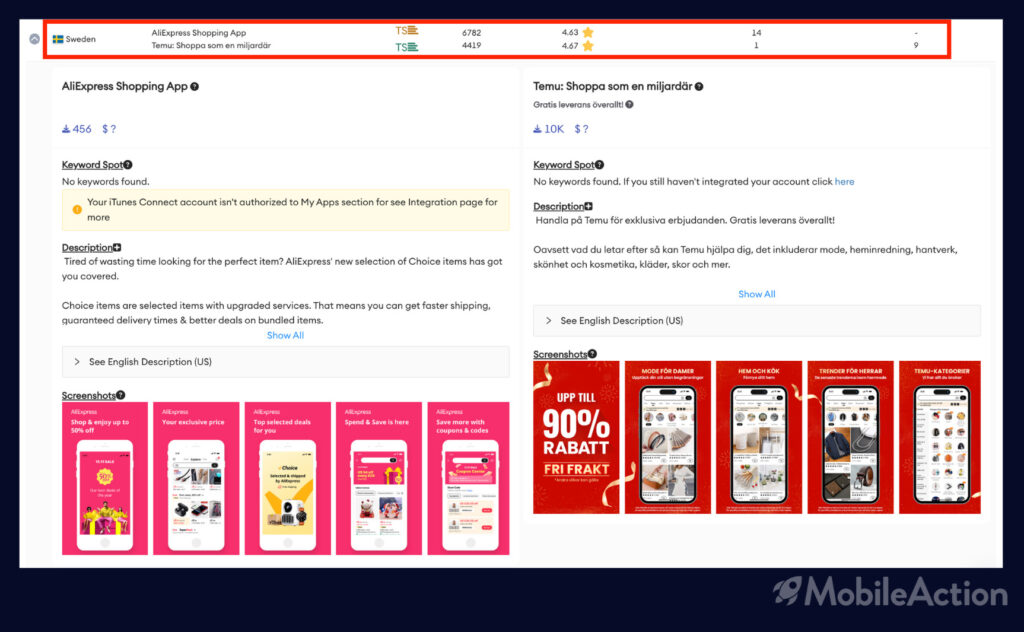

However, taking a contrasting perspective, AliExpress localized its subtitles and descriptions in Ukraine, leading to an immediate impact. AliExpress secures a significantly higher visibility score and category ranking in this case.
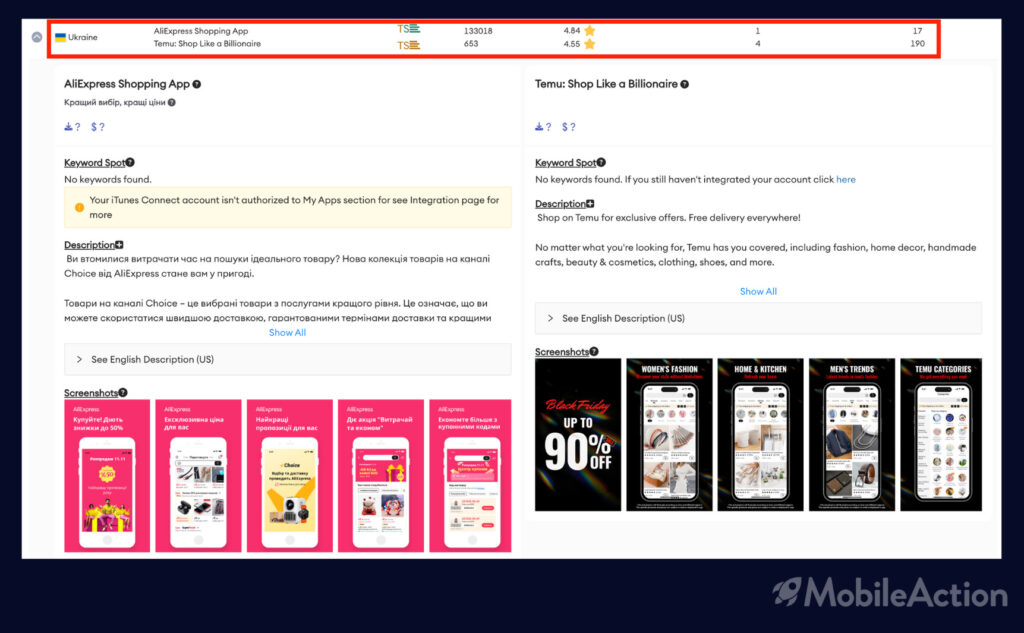
The detailed visibility map below provides a comprehensive comparison.

As evident from the data above, app localization is pivotal in enhancing visibility within specific regions.
It also affirms the hypothesis that customers tend to prefer products with information available in their native language when faced with similar choices. This underscores the crucial role of localization in influencing consumer decisions.
Localize Like a Pro with MobileAction’s Localization and Translation Features
MobileAction’s Localization tool offers an overview of an app’s localized ASO elements (title, subtitle, and description) and its performance across active countries. It allows you to uncover effective localization strategies, identify potential geographies for future localization, and gain insights into competitors’ global strategies. You can analyze localized content, understand top-ranking countries, and refine your app’s localization strategy by comparing different apps’ approaches to strengthen your market position.
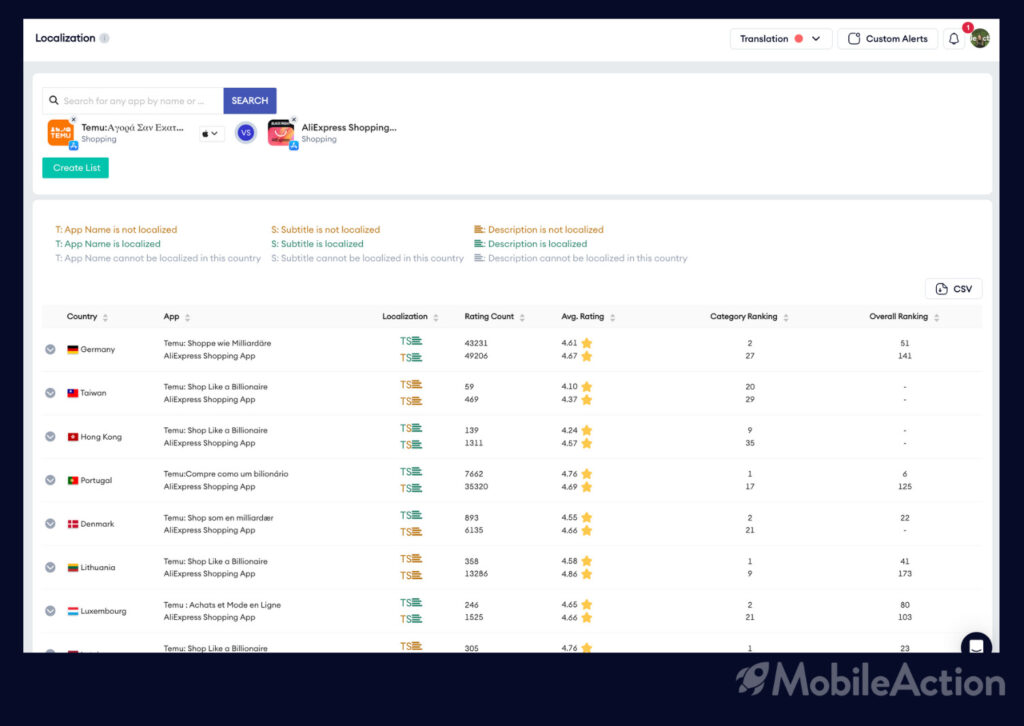
You can also use the Keyword Translator tool to support your localization efforts. A part of the localization comes from translating your ASO elements for the targeted countries. By leveraging Keyword Translator, you can effortlessly translate your metadata keywords (more than 20 keywords simultaneously) in 22 languages —titles, subtitles, and descriptions—for an international audience. Tracking each keyword’s character counts and search scores is also possible to optimize your metadata effectively and adapt your strategy quickly.
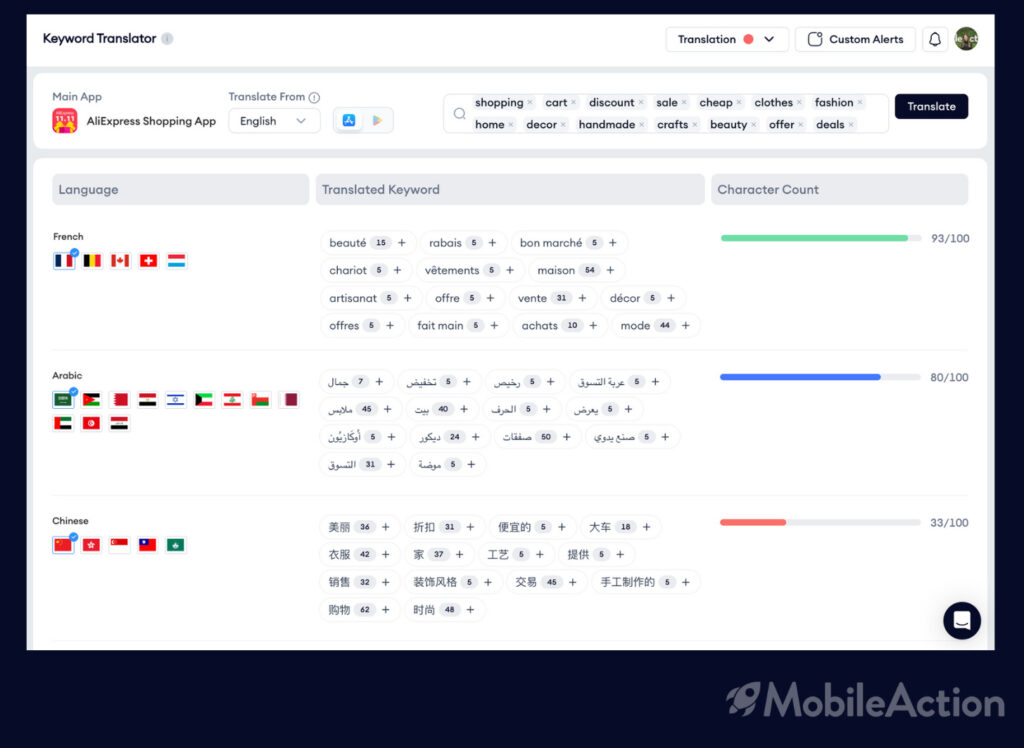
Initiate your localization journey today, whether you’re looking to strengthen your strategies, merge localization into your ASO endeavors to expand your user base, or seek comprehensive guidance. Take the first step by scheduling a demo with MobileAction, where experts will help you explore the path to your app’s global success.




